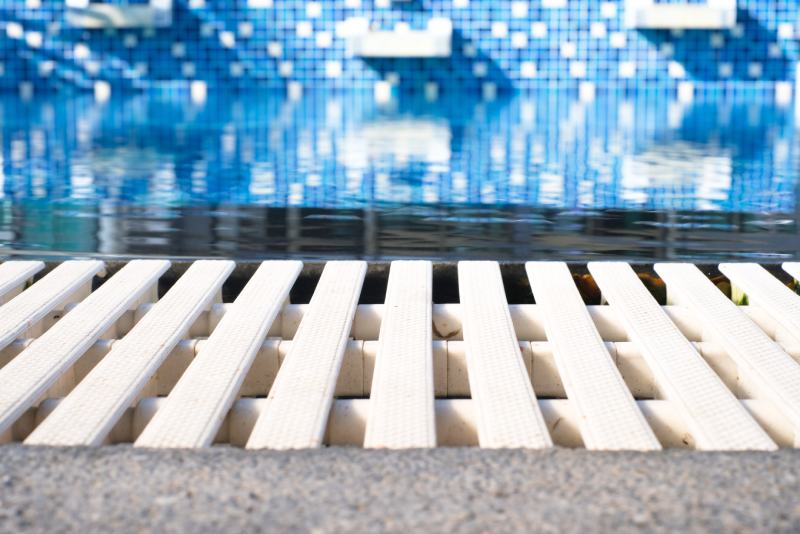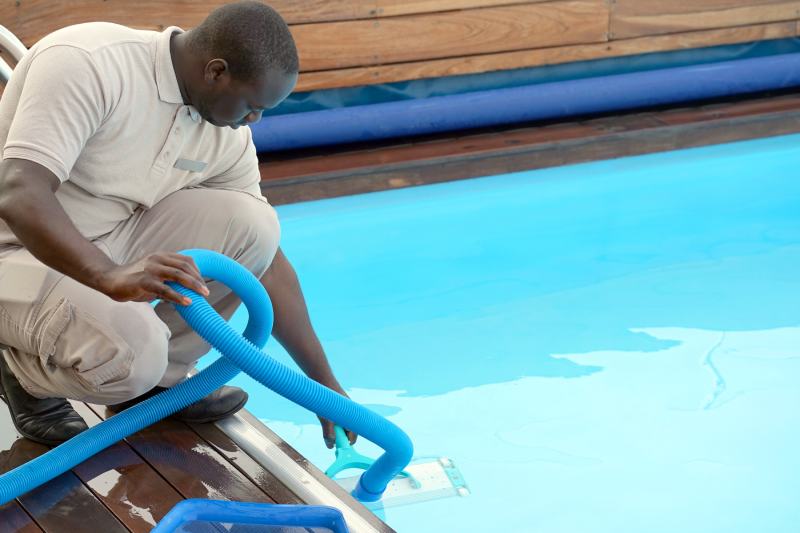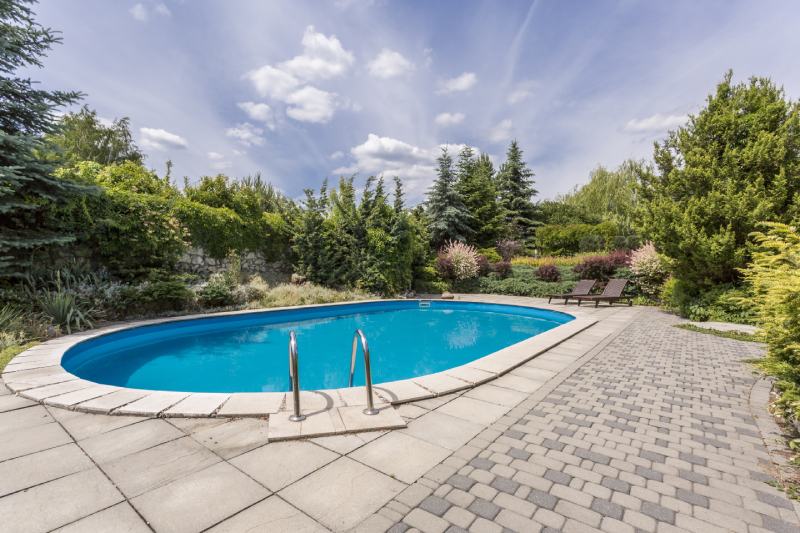Introduction to Acid Baths for Pools
Swimming pools require regular maintenance to ensure clean and properly balanced water. One essential aspect of pool maintenance is adjusting the pH level. In cases where the pH level is too high, causing cloudy water and discomfort to swimmers, an acid bath is a recommended solution. The Importance of Routine Pool Equipment Inspections can help you detect such issues in time. This guide will walk you through the steps of performing an acid bath for your pool without draining, along with practical tips to achieve optimal results.

Do You Need to Drain Your Pool to Acid Wash?
Exploring the Acid Wash Process Without Draining Your Pool
Traditionally, acid washing involves draining the pool entirely, which is time-consuming and requires a water refill afterward. However, modern techniques allow for an acid bath without draining the pool completely. Following specific steps, you can adjust the pH level and address surface stains while preserving the pool water.
Understanding the Importance of Acid Washing
Acid washing serves multiple purposes. Firstly, it helps balance the pH level, ensuring the water is within the ideal range for swimming comfort and equipment longevity. Additionally, an acid bath effectively removes stains that may have developed on the pool’s surface, resulting in a refreshed and clean appearance.
Steps to Perform an Acid Bath for Your Pool
Before starting the acid bath, refer to The Complete Guide to Acid Bath for Pools: Steps, Tips, and Professional Services to ensure you’re fully prepared.
Step 1: Testing the pH Level of Your Pool Water
Before initiating the acid bath process, it’s crucial to test the pH level of the pool water. Use a reliable test kit to determine if the pH level is above the recommended range (typically 7.2 to 7.8). If the pH level is higher, an acid bath may be necessary to return it to the desired range.
Step 2: Calculating the Appropriate Amount of Acid
The amount of acid required depends on the size of your pool and the current pH level. Calculating the precise amount of acid is essential to avoid using too much, which could be harmful. Refer to the instructions provided with the acid product or consult a pool professional to determine the correct dosage.
Step 3: Adding Acid to Your Pool Water
Remember to follow safety precautions when adding acid and wear protective clothing, including gloves, goggles, and a mask. Always add water to the acid, not the other way around, to avoid any potential hazards. Add the calculated amount of acid slowly and evenly to the pool water. For even distribution, adding the acid in smaller doses over time is recommended.
Step 4: Circulating the Water for Even Distribution
After adding the acid, run your pool’s filtration system for several hours to ensure thorough circulation. This helps evenly distribute the acid throughout the pool, preventing localized corrosive effects on the surfaces. Adequate circulation is crucial for achieving optimal results.
Step 5: Retesting the pH Level and Making Adjustments
Once the water has circulated for several hours, retest the pH level to evaluate the effectiveness of the acid bath. If the pH level is still too high, additional small acid doses can be added. Conversely, if the pH level becomes too low, soda ash can be added to raise it back to an appropriate range.
After completing the process, check out Understanding and Handling High Alkalinity in Your Pool to further improve your pool maintenance skills.

The Option of Hiring Professional Pool Services
Finn’s Pool Services: Expert Acid Bath and Maintenance Solutions
Performing an acid bath requires careful attention to detail and adherence to safety precautions. If you prefer to entrust the task to professionals, consider hiring a reputable pool service provider like Finn’s pool acid bath services. Their experienced technicians specialize in acid baths and provide comprehensive maintenance solutions to keep your pool in top condition.
Frequently Asked Questions about Acid Baths for Pools
Do You Need to Drain Your Pool to Acid Wash?
One common misconception is that you must drain your pool entirely to perform an acid wash. However, modern techniques and advancements in pool maintenance have made it possible to acid wash your pool without draining. This not only saves you time but also preserves water resources. Following the proper steps and precautions can achieve the desired results while keeping your pool intact.
How Long Should You Leave an Acid Wash on Your Pool?
The duration of an acid wash on your pool will vary depending on several factors, including the severity of stains and the condition of the pool surfaces. Generally, an acid wash can range from 15 to 30 minutes. It’s important to monitor the process closely and avoid leaving the acid on for an extended period, as prolonged exposure can potentially damage the pool surfaces. Always refer to the manufacturer’s instructions or consult a pool professional to determine the optimal duration for your specific pool.
How many acids Do You Need to Acid Wash a Pool?
The amount of acid required for an acid wash depends on the size of your pool and the specific conditions you’re addressing, such as stains or pH imbalance. It’s crucial to calculate the proper dosage to avoid using too much acid, which can adversely affect your pool. The acid manufacturer typically provides the recommended dosage, which can be determined by consulting a pool professional. By accurately measuring and adding the appropriate amount of acid, you can achieve effective results without risking damage to your pool.
Can You Swim in Your Pool Immediately After an Acid Wash?
After completing an acid wash, it’s important to ensure that the pH level of the pool water returns to the appropriate range and that the acid has been thoroughly diluted and circulated. Swimming in the pool immediately after an acid wash is not recommended, as the pH level may still be unbalanced, and the water may contain residual acid. It’s best to wait until the pH level is within the recommended range and the water has been properly circulated and balanced. Regularly testing the water and confirming its safety before swimming is essential to ensure a pleasant and safe swimming experience.
What Chemical Is Used to Acid Wash a Pool?
Muriatic acid, or hydrochloric acid, is the most commonly used chemical for acid-washing pools. It is a strong acid that effectively lowers the pH level and helps remove stains and contaminants from the pool surfaces. Muriatic acid is widely available and can be purchased from pool supply stores or hardware stores. When handling muriatic acid, it’s important to follow safety precautions, such as wearing protective clothing and working in a well-ventilated area. Always read the manufacturer’s instructions and take necessary safety measures to ensure proper handling and usage of muriatic acid during the acid wash process.
Will an Acid Wash Remove Black Algae?
While an acid wash can help remove surface stains, including black algae, it may not eliminate the underlying roots. Consult a professional to determine the best approach for treating black algae.
What Happens If You Put Too Much Acid in Your Pool?
Using too much acid can lower the pH level excessively, leading to corrosive effects on pool surfaces and potential damage to equipment. It’s crucial to calculate the appropriate dosage and follow recommended guidelines.

Achieve a Pristine Pool with Acid Bath and Maintenance
Following the step-by-step process outlined in this guide, you can effectively perform an acid bath for your pool without draining it. Remember to prioritize safety, use the correct amount of acid, and circulate the water adequately for even distribution. For those who prefer professional assistance, Finn’s Pool Services offers expert acid bath and maintenance solutions to ensure your pool remains in optimal condition. Enjoy a sparkling, clean pool and a comfortable swimming experience for years.



